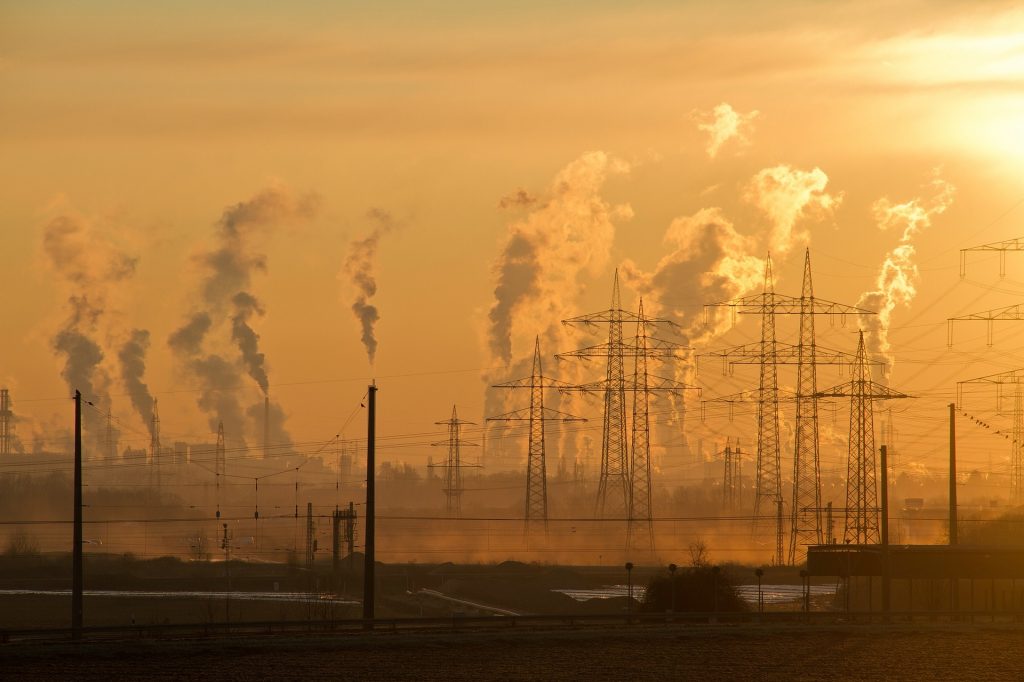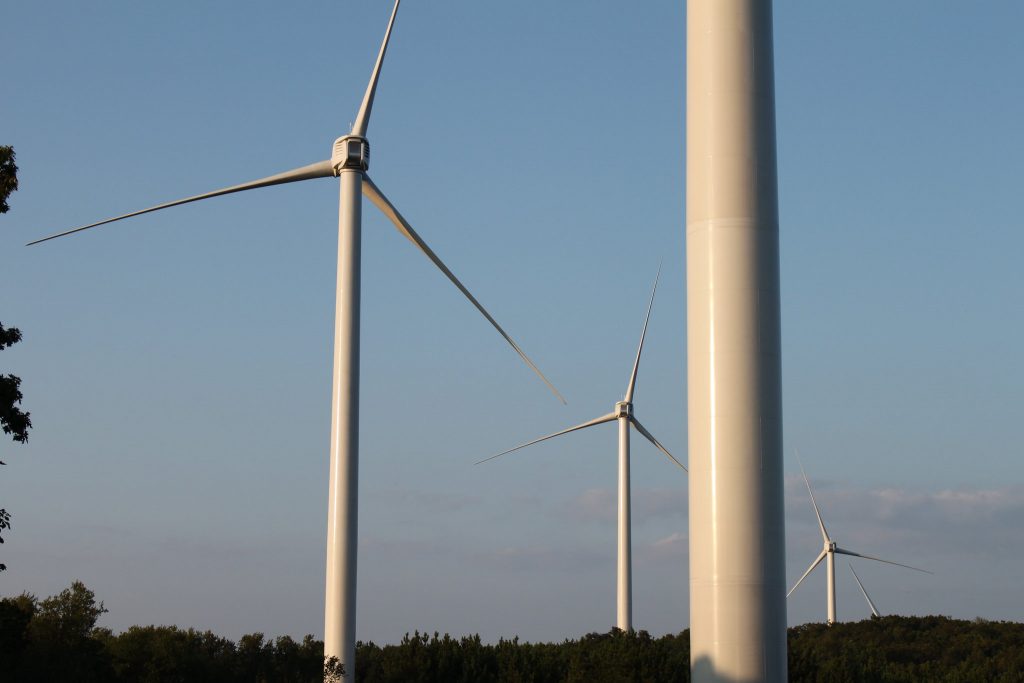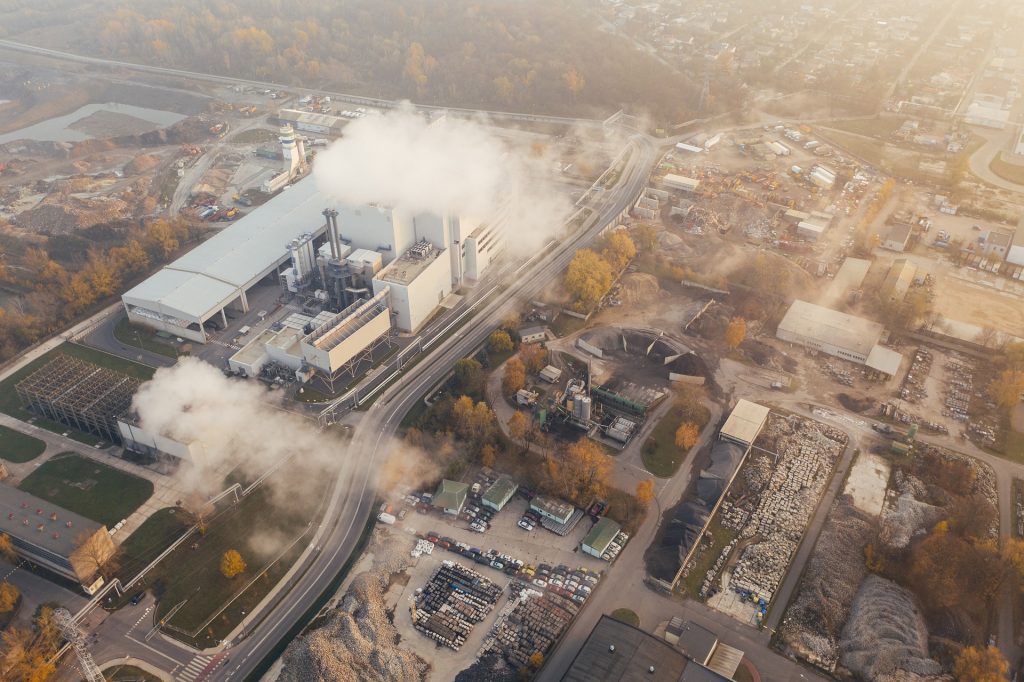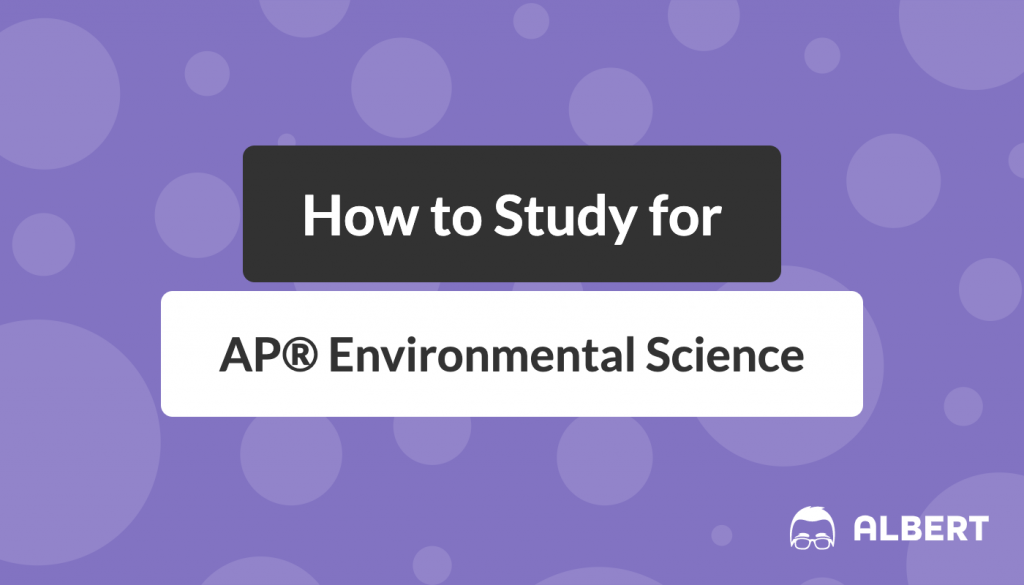Introduction
With the effects of our rapidly changing climate becoming more and more apparent in our everyday life, the topic of environmental science is certainly a relevant one. As such, you may feel a bit overwhelmed about figuring out how to study for your AP® Environmental Science exam. With so much new information constantly being thrown at you from the media and even your other classes, it can feel like the amount of information is just too much. Well, hopefully, this AP® Environmental Science study plan can help you break it down into manageable bits that you can focus on, with some handy APES tips thrown in to really prepare you to get the best score you can.
Throughout this AP® Environmental Science study guide, we’ll take you through everything that’s expected of you as well as everything you can expect, to make sure that you’re confident and ready to go on the day of the exam.
AP® Environmental Science Study Guide: Know What’s Expected
While the APES class at your school will most likely try to cover everything in the course syllabus, you may find that you spend much more time and emphasis on some topics over others. Because of this, it’s always good to have an understanding of exactly what material you’re meant to know for the official AP® exam, rather than just your course assignments. The College Board curriculum focuses on seven key topics, all of which can be tied together through the six major course themes. Let’s go over what these are.
AP® Environmental Science Course Themes
As you’ll see below when we go over the seven APES key topics, the course content is made up of material from many different disciplines. You’ll be expected to know some biology, chemistry, geology, history, physics, anthropology, economics and even government policy, making this one of the most interdisciplinary AP® courses. This may make it seem impossible to study for, which is why it’s so important to have a good understanding of the course themes. By being able to understand how each of these themes is relevant to each topic, regardless of what discipline it is in, you will be better able to unify the information in your mind and see the big picture of how it all fits together. As part of your study plan, try to give an explanation of how each of these themes is relevant to each major topic. This will be excellent practice for the free response questions as well, as they will be specifically looking to see whether or not you have a good grasp of the course themes. These are the course themes for AP® Environmental Science as set out by the College Board:
• Science is a process.
• Energy conversions underlie all ecological processes.
• The earth itself is one interconnected system.
• Humans alter natural systems.
• Environmental problems have a cultural and social context.
• Human survival depends on developing practices that will achieve sustainable systems.
AP® Environmental Science Topics and Learning Objectives
Although there are only seven key topics, which is fewer than most other AP® courses, don’t let this fool you into thinking that there is less material to cover. While the number of topics may be less, the disciplines across which they range are quite varied. Below, we’ll list each of the topics, as well as the main points you’ll need to know according to the College Board, in order of the number of questions you’re likely to see on that topic on the exam. For each one, we’ll also link some review materials, like flashcards, review videos, or crash courses. This way, you can create your own AP® Environmental Science study plan based on the importance of the topics and your strengths and weaknesses. Keep in mind though, that the review materials provided may not cover everything you need to know about that topic.
The following topic outlines were taken from the College Board’s course guide to AP® Environmental Science.
Topic 1: Pollution

Approximate number of questions on exam: 25-30
A) Pollution types
1. Air pollution
2. Noise pollution
3. Water pollution
4. Solid Waste
B) Impacts on the environment and human health
1. Hazards to human health
2. Hazardous chemicals in the environment
C) Economic impacts
Here are some resources you can use to study:
• Flashcards
• Review Videos:
• Air Pollution
• Water Pollution
• Solid Waste
• Health Impacts of Pollution
• Albert.io Crash Course Review:
Topic 2: Earth Systems and Resources

Approximate number of questions on exam: 10-15
A) Earth science concepts
B) The atmosphere
C) Global water resources and use
D) Soil and soil dynamics
Here are some resources you can use to study:
• Flashcards
• Review Videos:
• Environmental Systems
• Geology
• The Atmosphere
• Water Resources
• Soil and Soil Dynamics
Topic 3: The Living World

Approximate number of questions on exam: 10-15
A) Ecosystem structure
B) Energy flow
C) Ecosystem diversity
D) Natural ecosystem change
E) Natural biogeochemical cycles
Here are some resources you can use to study:
• Flashcards
• Review Videos:
• Ecosystem Ecology
• Energy Flow in Ecosystems
• Ecosystem Diversity
• Natural Ecosystem Change
• Biogeochemical cycles
• Albert.io Crash Course Review:
Topic 4: Population

Approximate number of questions on exam: 10-15
A) Population biology concepts
B) Human population
1. Human population dynamics
2. Population size
3. Impacts of population growth
Here are some resources you can use to study:
• Flashcards:
• Population ecology
• Human populations
• Review Videos:
• Population Ecology
• Human Population Dynamics
• Human Population Size
• Human Population Impacts
Topic 5: Land and Water Use

Approximate number of questions on exam: 10-15
A) Agriculture
1. Feeding a growing population
2. Controlling pests
B) Forestry
C) Rangelands
D) Other land use
1. Urban land development
2. Transportation infrastructure
3. Public and federal lands
4. Land conservation options
5. Sustainable land-use strategies
E) Mining
F) Fishing
G) Global economics
Here are some resources you can use to study:
• Flashcards
• Review Videos:
• Agriculture
• Forestry and Rangelands
• Land Use
• Mining
• Fishing
• Environmental Economics
Topic 6: Energy Resources and Consumption

Approximate number of questions on exam: 10-15
A) Energy concepts
B) Energy consumption
1. History
2. Present global energy use
3. Future energy needs
C) Fossil fuel resources and use
D) Nuclear energy
E) Hydroelectric power
F) Energy conservation
G) Renewable energy
Here are some resources you can use to study:
• Flashcards
• Review Videos:
• Energy concepts
• Energy consumption
• Fossil fuels
• Nuclear energy
• Hydroelectric power
• Energy reduction
• Renewable energy
• Albert.io Crash Course Review:
Topic 7: Global Change

Approximate number of questions on exam: 10-15
A) Stratospheric ozone
B) Global warming
C) Loss of biodiversity
1. Causes: habitat loss, overuse, pollution, introduced species
2. Maintenance through conservation
3. Relevant laws and treaties
Here are some resources you can use to study:
• Flashcards
• Review Videos:
• Stratospheric ozone
• Global climate change
• Loss of biodiversity
AP® Environmental Science Study Guide: Know What to Expect
Although you may have already taken other AP® exams, it’s important to keep in mind that the format of each exam is different, sometimes drastically so. Make sure you know exactly what to expect, so you are not caught off guard and are able to adjust your AP® Environmental Science study plan accordingly.
The APES exam consists of only two sections but lasts a total of three hours, making it one of the longest AP® exams. The first section is the multiple-choice part. You will have 90 minutes to complete 100 multiple-choice questions that range across each of the seven topics covered in the course. This part is worth 60% of your overall score.
After the multiple-choice section, you will have a break for ten minutes. The second part of the exam is then the free-response section. You will have 90 minutes to write open response answers to four questions. Within these questions, two will be synthesis and evaluation questions, one will be a document-based question, and one will be a data set based question. Generally, each question will have multiple parts that you will be required to answer. This section is worth 40% of your final score.
APES Tips for the Exam: Multiple-Choice Section

Fifty-four seconds. On average, that is how much time you will have to complete each multiple choice question on the exam. Although seeing that number might cause you a fair bit of anxiety, it’s actually a lot more time than you might think. Reading this far into this paragraph for example probably only took you a little over ten seconds. The vast majority of the questions will be shorter than this, and completing those questions quickly will leave you more time for some of the harder ones you may struggle with. A key thing to remember on AP® exams though is that you will not be deducted points for incorrect answers. It is in your best interest to answer every single question, even if you are unsure. Eliminate any options you know can’t be right and then pick the best choice from the remaining options. Remember, even a 25% chance is better than 0% – you have nothing to lose!
Throughout the multiple-choice section of the exam, you will come across a variety of question types. Some of these, unfortunately, are specifically designed to try and confuse you. One of the best APES tips we can give is to become familiar with all the question types so that you know what to expect and are not caught off guard. We’ll outline the main types of questions you can expect below.
1. Definitional: These questions are pretty straightforward. Either you will be given a definition and will be asked to choose the correct term, or you will be given a term and asked to choose the correct definition.
2. Cause and Effect: These questions are generally in a fill-in-the-blank format. You will be given a statement about a cause and effect phenomenon, but the actual terms will be blank. Your task is to choose which combination of terms will make the statement true.
3. Sequencing: For this type of question, you will be given a list of 3-5 events and will be required to choose which option lists them in the correct sequential order. For these questions it is best to first put them in the order you think they should be and then look for that answer, rather than trying out each of the options individually.
4. Solution: These questions will require some simple arithmetic. You are not allowed a calculator on the AP® Environmental Science exam, so these will all be problems that you should be able to solve either in your head or on paper.
5. Hypothetical: This style of question will ask you to apply your knowledge of a theory to a hypothetical situation. Keep an eye out for “all of the above” and “none of the above” answers; don’t just pick the first the good answer you see!
6. Comparing/Contrasting: These questions will ask you to pick either a similarity or a difference between two topics. Make sure you answer what the question is actually asking, as there are likely to be options that are closely related to each topic to throw you off.
7. Multiple Correct Answers: For these types of questions you will be given a number of possible answers to a problem, and you will have to decide which combination of them (if any) are correct.
8. Negative: These types of questions can be some of the most confusing. They will often ask you to pick the option that is NOT true, or that is LEAST likely have an effect. It can be hard to put down a false statement as your answer, especially when you see all the true statements surrounding it, so just remember to keep the question straight in your head.
9. Graph/Chart/Sketch: For these types of questions you will be presented with some sort of illustration, and you will be asked to draw various conclusions from it. Often there will be more than one question relating to each illustration. Make sure you are confident in your ability to interpret graphs and charts as it is pretty much guaranteed that there will be at least one question asking you to do so.
APES Tips for the Exam: Free Response Section

Now that you know what to expect for the multiple-choice section, let’s take a look at some tips that can help you prepare for the free response questions. In this section, you will have to answer a total of four questions, each of which will likely have multiple parts. As you already know, these questions are divided up to include one document-based question, one data set analysis question, and two synthesis and evaluation questions. Let’s go over some APES tips for each one.
Document-Based Question
For this question, you will be given either an excerpt from a document or an entire document to read and interpret. The document can be anything from a newspaper article, an ad in a magazine, or even a leaflet from the Department of Energy. The best strategy for approaching the document-based question is first to read the short intro that explains what the document is and what context it is being presented in, then to read all the questions, and only then to read the document itself. This way you will know exactly what information you need to look for even the very first time you read through the document. If it is quite long, it’s a good idea to underline any parts that you feel are relevant to the questions so you can easily refer to them when you are answering.
The questions about the document will usually ask you to describe various topics mentioned within it. When you see these sorts of questions, your best strategy is first to provide a good definition of whatever it is they are asking you to describe and then to give some good examples of it. If the question asks for a specific number of responses, for example by saying “describe TWO ways…” or “describe THREE benefits…”, make sure that you meet that number! If it helps you keep track, you are allowed to number your answers. Keep in mind though, that when specific numbers are mentioned, only your first answers will count. In other words, if the question asks for three benefits of something, only the first three you write down will be graded – writing down four or five will not give you extra points so don’t waste your limited exam time on that.
Data Set Question
The data set question will provide you with a set of data in the form of either a graph, chart, map, or table. You will be asked to interpret the data, do some basic calculations, and answer a couple questions regarding the information.
If the question asks you to calculate, you will obviously be expected to do some math. Unfortunately, you are not allowed a calculator on this exam so you’ll have to do this by hand. The good news is that this means the problems can’t be too difficult. A key thing to remember is to show ALL of your steps for how you arrived at your answer (i.e. show your work) in the answer booklet and not in the test booklet. The graders can still award you some points for having the correct setup, even if you arrive at the incorrect answer. When you do arrive at an answer, remember to circle it or put a box around it or in some way make it easy for the person grading to see that that is your final conclusion.
If you are asked to make a graph (which you probably will be), the first and most important thing you absolutely must do is LABEL YOUR AXES! Setting up the graph with the correct labels, units, and a title is really half the battle – and half the points. Plus, once you have everything set up, it will be much easier for you to actually plot whatever information you are meant to put on the graph. If you’re expected to graph more than one thing on the same plot, make sure you label all of your lines/curves so that everything is clear.
Synthesis and Evaluation Questions
This is the most general section of the free response questions, so it’s hard to know exactly what to expect. Generally, in one way or another, these questions tend to ask you to find relationships between varieties of environmental science concepts. This is a good time to think back to those course themes we looked at at the beginning of this guide, as tying in as many of those as you can into these synthesis and evaluation free response questions is generally a safe bet as far as earning yourself some points.
One type of question that could appear as part of the synthesis and evaluation section is a question that asks you to design an experiment. You should have had some experience with study design throughout the course, but even if you haven’t, you’ve certainly read enough about studies to be able to design a pretty good procedure. Here are a couple of things that you will definitely need to include in your answer if you get a question like this:
Make sure you clearly state your hypothesis and your prediction. The hypothesis is the idea that your experiment is trying to test. The prediction is what you anticipate is going to happen in your experiment. For example, a hypothesis could be, “using study guides to prepare for AP® exams enables students to retain more information.” A prediction would be, “students who use study guides will score higher on the AP® test than students who do not.”
Lay out the details of exactly what you will do in the Methods section. Make sure you mention:
• What you are measuring (your dependent variable)
• What treatments you will apply (your independent variable)
• Your experimental groups and your control groups (your subjects)
• The materials or apparatuses you will need
• The procedure you will use
• The length of your experiment
• How you will record data
• How you will analyze the data and come to a conclusion
• Any potential confounds of your experiment that could affect your conclusion
If you include each of these in an answer on designing an experiment, you are pretty much guaranteed to do well, as long as your study is realistic and more or less feasible. Don’t try to design an overly complex study in the hopes of impressing the graders. The best study designs tend to be the simplest ones.
AP® Environmental Science Study Guide: Test Yourself!
By far the single most important thing you can do to improve your chances of getting a high score on this exam is practicing, practicing, and practicing some more; especially for the free response questions. While re-reading your notes and watching review videos is a great starting point in your AP® Environmental Science study plan, it’s essential that you move on to taking practice tests and applying your knowledge if you really want to solidify that information in your brain. Taking practice exams, particularly those that are actual exams from previous years, is a great way to do this.
While you’re still in the early stages of your reviewing and studying, don’t worry about time limits when taking your practice exams. You might even find it useful to keep your review book or class notes next to you as you work so you can easily look up things you don’t remember or want to double check. This will be a good way to learn and review in the early stages of your studying.
Eventually though, as the exam date looms closer and closer,it will be important for you to set up your practice exams to be just like the real thing. This will help you get the most out of these long three-hour study sessions. Try to sit in a quiet room with no distractions. Turn off your phone and put it away as well. Set an alarm to give yourself only the amount of time you would have on the actual exam: 90 minutes for the multiple choice, followed by a ten-minute break, and then 90 minutes for the free response. Remember to take these practice tests seriously; this is what will give you a good sense of what areas you should focus your studying on for the rest of your review sessions.
Once you’re done with your practice test, go over your answers carefully. This is where the real learning comes from: going back and finding the correct answers to the questions you got wrong! So, don’t just tally up your score, give yourself a grade, and call it a day. Make sure that for each answer you understand why your chose was incorrect and what the correct choice should have been. Did you fall into a trap because of confusing wording or did you just not review a topic well enough? Being able to recognize the wording tricks that previous exams used will make sure that you’re ready for them in your own exam.
You should also keep track of which of the seven key topics each of your incorrect answers belongs to. You may find that certain patterns emerge that show that you should spend more time reviewing a certain area than you thought.
AP® Environmental Science Practice Test Resources:
You can find official sample questions from the College Board in their course description booklet. The questions start on page 12.
• You can see the free response questions from previous years as well as scoring guides on this page of the College Board website.
• If you create a College Board account, you can log in and download free AP® Environmental Science practice exams.
•You can find general APES review questions (organized by key topic) in Albert.io’s AP® Environmental Science section.
•Finally, review books are a great resource for study questions and usually have at least one entire practice exam. Here is a list of this year’s best AP® Environmental Science review books.
Wrapping Up
Now that you have reached the end of this AP® Environmental Science Study Guide, you should have a good sense of how to go forward in reviewing for the exam. You know what the course themes are, and you have outlines of each of the seven key topics, each with a handful of useful review resources. The rest is now all up to you and your dedication to practice, practice and practice some more. If you still feel you need just a little bit more guidance though, why not check out some of these other AP® Environmental Science articles to put your mind at ease?
→ The One Month AP® Environmental Science Study Guide
→ The Ultimate List of AP® Environmental Science Tips
Looking for AP® Environmental Science practice?
Kickstart your AP® Environmental Science prep with Albert. Start your AP® exam prep today.








